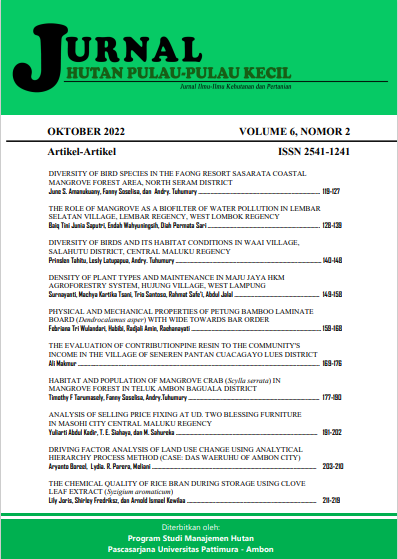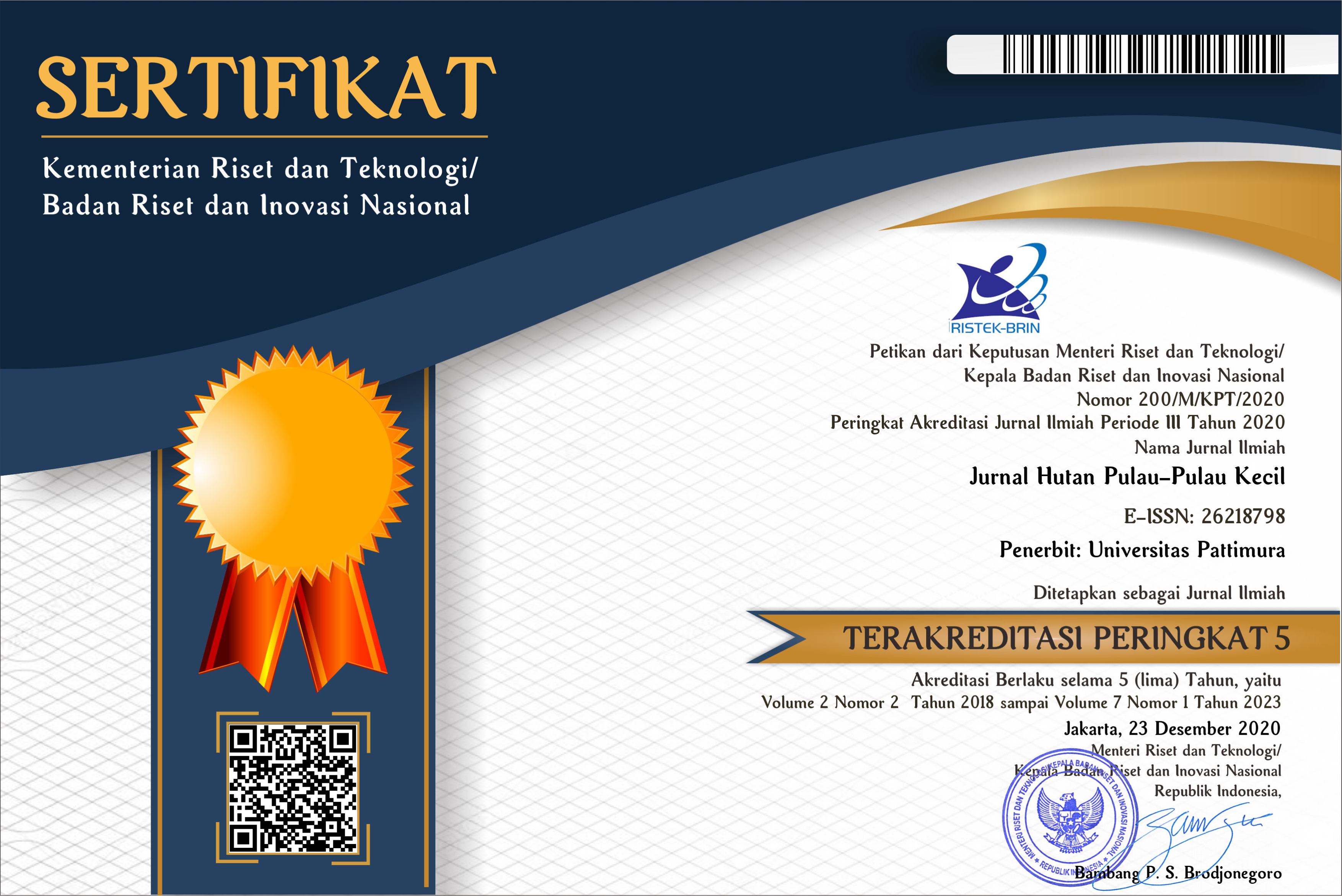THE ROLE OF MANGROVE AS A BIOFILTER OF WATER POLLUTION IN LEMBAR SELATAN VILLAGE, LEMBAR REGENCY, WEST LOMBOK REGENCY
Abstract
Waste from community activities around the mangrove area of South Lembar Village is suspected to be the cause of water pollution in that location. The existence of mangroves can overcome water pollution due to the ability of their biofilters. The purpose of this study was to determine the concentration of lead (Pb) and Cadmium (Cd) pollutants in the mangrove area of South Lembar Village and how the status of water pollution and the effectiveness of the mangrove's ability as a water pollution biofilter in South Sheet Village were. Data was collected through direct observation, testing of lead and cadmium parameters, measurement of physico-chemical parameters (temperature, salinity, pH, dissolved oxygen) and density data collection. This research uses purposive sampling method and plotted transect plot. Data analysis used descriptive method, storet method and density value analysis. The results of the lead and cadmium test on water samples at all stations are < 0.0002 mg/L, and the results of the measurement of physico-chemical parameters for the highest average temperature of 30.33oC, the highest average pH of 8.0, the highest average salinity 29.33‰, the highest average DO is 6.57 mg/L. Mangrove density in all stations obtained very dense density values. It can be concluded that the concentrations of lead and cadmium in all stations are still low and meet the quality standards. After being analyzed by the storet method, it is known if the water conditions are included in class A water (very good). The role of the mangrove biofilter can be seen from the condition of the waters that are still good.




